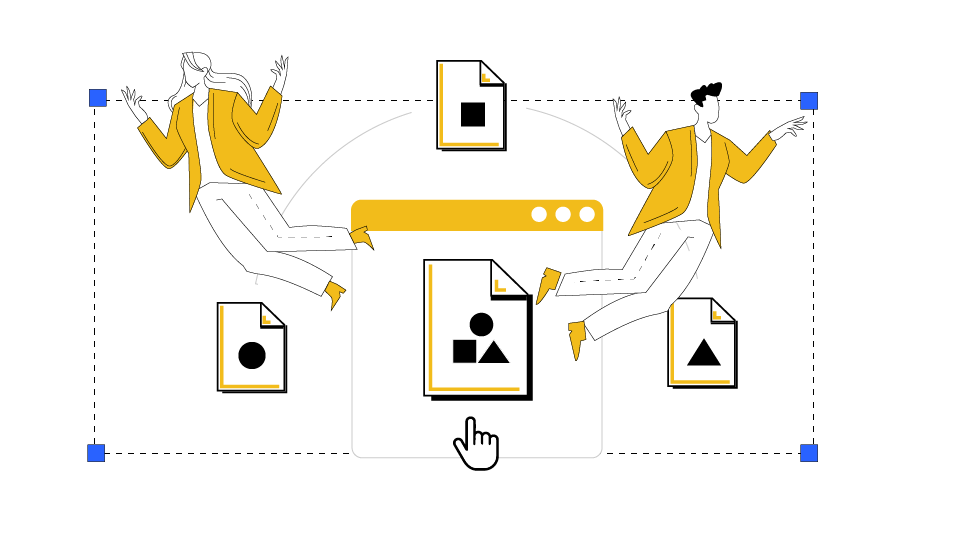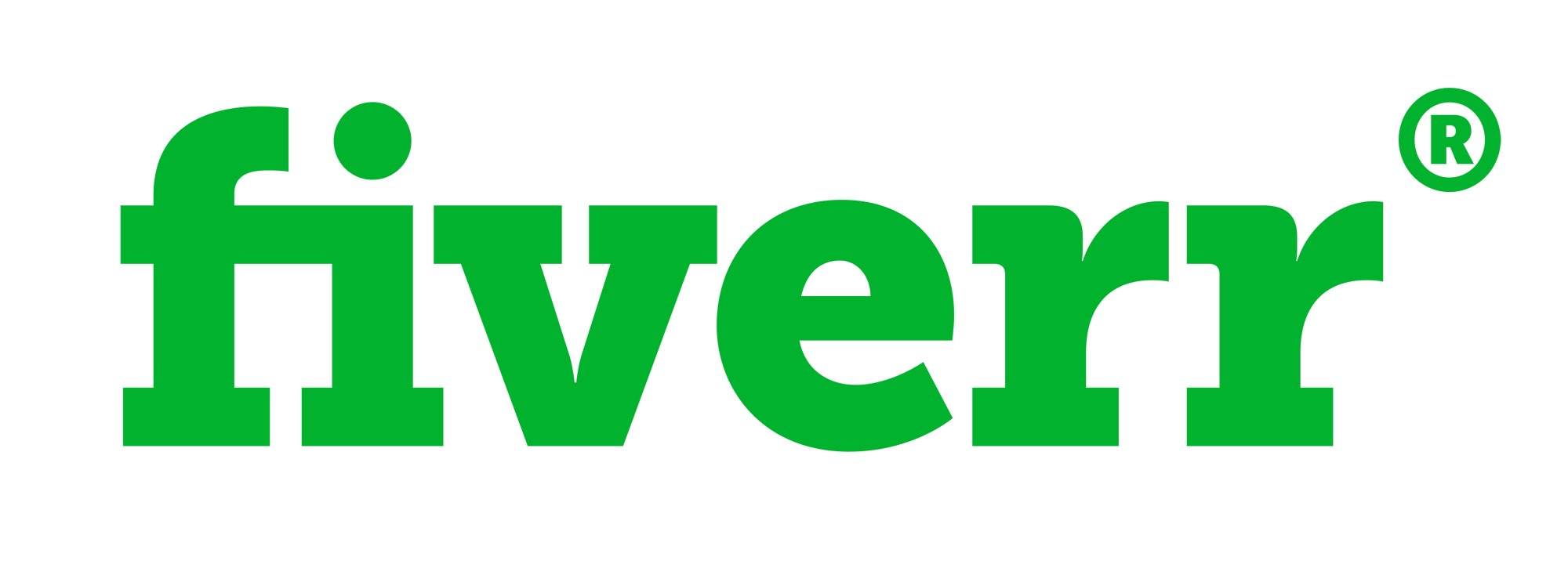Dear Illustrator
If you want to improve this article or suggest your version of this one, don't be so hesitant to send the letter
If you want to improve this article or suggest your version of this one, don't be so hesitant to send the letter
Commercial illustrations are used to sell products or promote a brand, while nonprofit illustrations are used to raise awareness and educate the public about a cause. Both types of illustrations are important for communicating information and influencing public opinion, but have different goals. Commercial illustrations aim to persuade people to buy something, while nonprofit illustrations aim to inform and educate. Both types of illustrations require the ability to create visually appealing images that effectively convey a message.
Before starting to design any illustration, an illustrator should have a clear understanding of the following information from the customer:

dALL-E is a free AI tool for creating unique illustrations and designs. It is powered by OpenAI's state-of-the-art language model, and allows users to generate illustrations by simply describing them in natural language. With dALL-E, anyone can create professional-looking illustrations without any design experience.
Google rank: 9.0
Midjourney is a free AI tool for creating unique illustrations and designs. It uses advanced Artificial Intelligence algorithms to generate illustrations and designs, and allows users to simply input a text or a concept to create professional-looking illustrations without any design experience. With Midjourney, anyone can create professional-looking illustrations quickly and easily.
Google rank: 8.7

Trust is the social glue that holds business relationships together. But, how do managers decide whether to trust a potential partner outside their business? And how does culture influence this decision-making process? To answer these questions, the authors...
Read moreThis template provides a structured format for creating a project brief for an illustration project. It includes essential sections such as Overview, Objectives, Target Audience, Style and Tone, Design Direction, Color Scheme and Composition, Format and Size, Deadline, Usage Rights, and Budget. Each section allows you to input specific details related to the illustration project, ensuring clarity and alignment between the client and the illustrator. This template helps streamline communication and provides a clear roadmap for the successful completion of the illustration project.
| Project Title | Illustrating [Insert Project Title] |
|---|---|
| Overview | The illustration project aims to [briefly describe the purpose and scope of the project]. It will involve creating visually appealing images to convey specific messages or ideas effectively. |
| Objectives |
|
| Target Audience | [Describe the target audience for the illustrations, including demographics, interests, etc.] |
| Style and Tone | [Describe the desired style and tone of the illustrations, e.g., playful, serious, whimsical, etc.] |
| Design Direction | [Include any specific design elements, concepts, or examples provided by the client] |
| Color Scheme and Composition | [Describe the preferred color scheme and composition for the illustrations] |
| Format and Size | [Specify the required format and size for the illustrations] |
| Deadline | [Provide the deadline for completing the illustrations and any milestones] |
| Usage Rights | [Detail how the illustrations will be used, who owns the rights, and the terms of the contract] |
| Budget | [Specify the budget for the project and the payment terms] |
Graphic designers utilize illustration, a powerful tool, to communicate ideas and messages. Illustrations can be created using various techniques such as drawing, painting, or digital media. They find applications in diverse design projects such as posters, book covers, infographics , and advertisements .
In the context of graphic design, an illustration serves as a visual representation of an idea or concept. It can be employed to create visual metaphors, explain abstract concepts, or inject humor into a design.
When creating an illustration, it's crucial to consider the target audience and the message that needs to be conveyed. The style, color, and composition of the illustration should be chosen carefully to ensure resonance with the audience and effective communication of the intended message.
The objectives and goals of an illustration depend on the context in which it is used. For example, in web design and video design:
Specifically, the objectives of an illustration are to:
Monday.com is a cloud-based platform that allows users to create their own applications and work management software. The product was launched in 2014 and in July 2019, the company raised $150 million, based on a $1.9 billion valuation. The company went public in June 2021 and is based in Tel Aviv, Israel.
Google rank: 4.4
Trello is a web-based, Kanban-style, list-making application and is developed by Trello Enterprise, a subsidiary of Atlassian. Created in 2011 by Fog Creek Software, it was spun out to form the basis of a separate company in New York City in 2014 and sold to Atlassian in January 2017.
Google rank: 6.4

Asana is a web and mobile work management platform designed to help teams organize, track, and manage their work. It is produced by the San Francisco based company of the same name. The company was founded in 2008 by Dustin Moskovitz and Justin Rosenstein. The product launched commercially in April 2012.
Google rank: 9.4
When writing a creative brief for an illustration project, it is important to establish measurable results that align with the project's triple constraint of scope, time, and cost. These results should be specific, measurable, attainable, relevant, and time-bound (SMART).
By including measurable results in the creative brief that align with the project's triple constraint of scope, time, and cost, the illustrator and the customer can have a clear understanding of the goals and objectives of the illustration project, and the success of the illustration can be evaluated based on these results.
Whether you’re a one-person freelance company or have a team that you work with, goals are imperative in terms of providing direction for your company. Goals can be around revenue growth, customer satisfaction, or just about anything associated with improving your business long-term. Once set, you need to establish measurable objectives supporting them. The article How to Set Goals does a great job of explaining goals and what criteria should be used when setting supporting objectives.
Read more
Do you often find yourself setting out big plans, only to fall flat and push the plan aside? This is a common occurrence. Luckily, there exists a well-defined solution that's easy to follow. It comes in a detailed system of measurable goals and objectives that puts you on a path to success.
Read more
When crafting a creative brief for an illustration project, it's essential to provide references for the illustrator to use as inspiration and guidance. These references can include examples of existing illustrations, artwork, or visual styles that align with the desired look and feel of the project. Providing references allows the illustrator to gain a deeper understanding of the customer's vision and expectations for the project, and can help to ensure that the final product meets those expectations.
 It's also important to note that all new ideas are often built on the foundation of existing ones, or by combining and modifying existing concepts. By providing references, the illustrator can better understand the customer's desired direction and create an illustration that aligns with that vision.
It's also important to note that all new ideas are often built on the foundation of existing ones, or by combining and modifying existing concepts. By providing references, the illustrator can better understand the customer's desired direction and create an illustration that aligns with that vision.
The closer the customer's and illustrator's ideas for the project match, the greater the chance that the project will be completed successfully. By providing clear and relevant references in the creative brief, the customer can help the illustrator to understand their vision and create an illustration that exceeds expectations.
Best websites with illustration references
Behance is a social media platform owned by Adobe whose main focus is to showcase and discover creative work. Behance was founded by Matias Corea and Scott Belsky in November 2005. It was acquired by Adobe in December 2012. As of October 2020, Behance had over 24 million members.
Google rank: 4.4
Pinterest is an image sharing and social media service designed to enable saving and discovery of information on the internet using images, and on a smaller scale, animated GIFs and videos, in the form of pinboards.
Google rank: 6.4
Dribbble is a self-promotion and social networking platform for digital designers and creatives. It serves as a design portfolio platform, jobs and recruiting site and is one of the largest platforms for designers to share their work online.
Google rank: 9.4
Setting up a budget early on will help you truly manage your money and direct your decision-making. Make sure to record precise figures and, when possible, include expenditures. It will be beneficial to conduct some brief research beforehand. Are there any strategies to reduce your expenses? You'll keep your boss happy if you allow yourself some time to fiddle with the figures before you even start the work!

Upwork connects businesses with independent professionals and agencies around the globe. Where companies and freelancers work together in new ways that .
Google rank: 4.4
Join the thousands of entrepreneurs who are launching their contests every week and harnessing the awesome power of crowdsourcing.
Google rank: 4.4

Another staple competitor analysis tool for SEO is Ahrefs’ site explorer, which allows you to check any URL’s top organic keywords. Additionally, you get a rough estimate of how much traffic a competitor receives on those keywords.
Google rank: 4.4
Who are the final customers? Actually, this is crucial. Whom does this example need to communicate with and make sense to? Who will view and utilize it? And what should it convey to that person when they view it? My memo stated "Students studying to become teachers of children between the ages of 6 and 15 make up the captive market. Parents of children in this age group as well as pre-service teachers ought to find the image to be very appealing. The intention is for them to voluntarily choose to pick up and purchase the book."
It’s pretty simple. Any marketing, whether it be video marketing or otherwise, we’ll miss the mark if you have no idea who you’re trying to reach with your message. So, the critical first step when you’re getting started with video marketing for your business is to clearly identify your target audience, and that’s what I’ll be helping you do in this article.
Read moreA common mistake made by creators is to assume that their target audience will come effortlessly over their brand’s YouTube channel, if you just focus on creating and publishing more videos. Although a study suggests that 78% of people watch online videos every week, only a tiny fraction might be interested in what you sell.
Read more
Is the client upscale, supportive, amiable, tech-savvy, or down to earth? Do they want to come across as brash and powerful or approachable?
Learn more about: What shades does the customer prefer or dislike? Maybe they want to stand out from the competition, who may utilize blue and green. It's a good idea to be aware of this information beforehand because the CEO can also detest the color purple. You could wish to find out which fonts they prefer.
Think about using various serif, san serif, and script fonts. Does the customer like formal fonts that convey seriousness? Or do they like scripty, handwritten ones that convey playfulness and friendliness? Is the photography they're utilizing artistic or professional? This will assist you in determining the tone of the
Learn more about: What shades does the customer prefer or dislike? Maybe they want to stand out from the competition, who may utilize blue and green. It's a good idea to be aware of this information beforehand because the CEO can also detest the color purple. You could wish to find out which fonts they prefer.
Making a mood board is the proper approach. Although Pinterest makes it incredibly simple, you may also design a mood board on a cork or bulletin board. Grab magazine cutouts, paint store color samples, and anything else that inspires you, including scraps of cloth or postcards. Typefaces or other type treatments should be added after a color. Look for images that depict the ideal customer. Just like styling a place or putting together an outfit.
In the modern world, illustration has become a key means of expression and conveying ideas. With a variety of approaches, from using artificial intelligence to freelancing and collaboration with professionals, artists face the choice between autonomous creativity and expert intervention. Let's explore the pros and cons of different methods of creating illustrations, examining how modern technologies impact artistic creativity.
Using Artificial Intelligence, Templates, Free Tools:
1.1 Pros:
1.2 Cons:
Freelance Platforms and Agencies:
2.1 Pros:
2.2 Cons:
Working with Professionals and Using Artificial Intelligence:
3.1 Pros:
3.2 Cons:
If you're looking to delve deeper into specific areas of work such as graphic design, video production, audio engineering, programming, copywriting, or marketing, you should check out the Project Briefs Categories on this website.
By exploring these categories, you'll find comprehensive briefs that provide detailed insights on approaching each type of work. They offer valuable information on recommended tools, techniques, and practical tips to excel in your chosen field. Whether you're a seasoned professional or a beginner, these briefs serve as a valuable resource, helping you enhance your skills and stay up-to-date with the latest trends and best practices.

llustrator and graphic recorder
I studied graphic design at the University of Pretoria and later completed my Master’s degree in illustration at the University of Stellenbosch. I am currently based in Cape Town where I work as a freelance illustrator and graphic facilitator.
I showcase my corporate and business illustrations on my www.fine-line.co.za website. My personal website (www.nicolenelouw.co.za) is dedicated to my editorial and more traditional illustration work.

Click the chat icon below to start a conversation with our AI assistant and take the first step toward mastering project documentation!